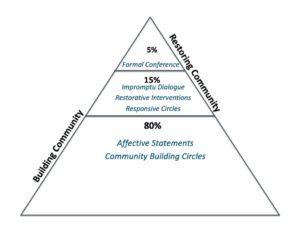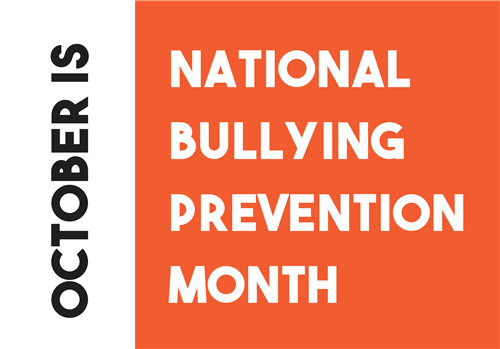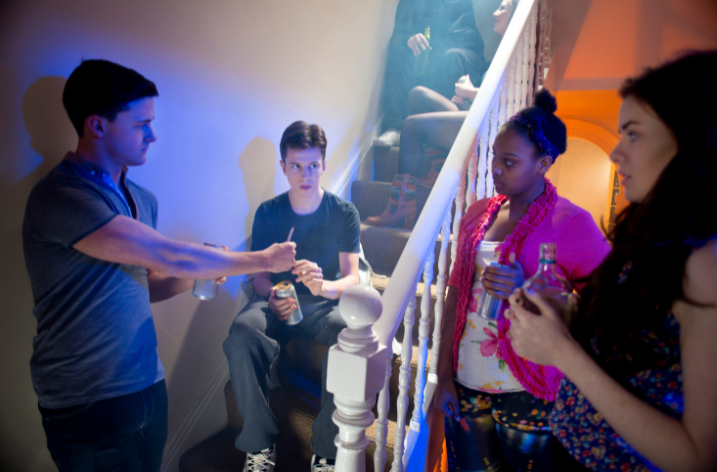by William Grace Frost, former Director of Strategic Relations, Community Matters
Data recently published by the Center for Disease Control (CDC), indicates that suicide is now the #1 cause of death for 11-14 years olds in America.
The first time I heard this statistic, it nearly took my breath away. Then after the shock wore off, my next thoughts were, “It must be a mistake or a misprint. How is it possible that anyone so young could feel such despondency and hopelessness as to want to take their own life, and even worse, that suicide could rise to the top of the mortality tables for these young children?”
Research shows that suicide-related behaviors are caused by a myriad of factors, and are often not related to a single cause or incident. We also know that bullying/cyberbullying is one of the contributing factors in students turning to suicide as a “solution” to their problems. Even though the vast majority of youths involved in bullying/cyberbullying do not choose such a rash resolution, we know that it’s a contributing factor in many specific cases and that it increases a child’s risk of suicide contemplation.
The death of a Sonoma Valley, CA, teen who killed himself in 2015 after years of bullying is but one tragic example. The boy’s father said that his son had been a target of bullying since elementary school. By the time he reached high school, with classmates continuing to pick on him and encourage him to take his own life, it became too much for the boy to bear.
The National Crime Prevention Council has found that 43% of teens report being bullied on-line and 81% claim that it’s much easier to bully someone with the use of social media. Despite the best efforts of policymakers and educators, bullying/cyberbullying has become a national crisis affecting school children all across the U.S., regardless of the school’s demographics, and regardless if it’s rural or urban, public, private or charter.
Due in part to teens and pre-teens mostly-unfettered access to the internet and their prevalent use of social media, the bullying phenomenon has reached epidemic proportions.
To a large extent, cyber-aggression and face-to-face bullying in all its forms are:
disproportionately targeted at many of our most vulnerable populations including youth of color, students with disabilities, LGBTQ youth and those who are regularly exposed to violence, alcoholism or drug abuse at home or in their neighborhood;
filtering down into younger and younger grades due to increases in cell phone use;
becoming meaner because hurtful things written on-line often emboldens the aggressors with a perceived sense of anonymity;
more socially and emotionally damaging due to the fact that:
kids access social media 24/7, leaving no “safe harbor” for them at home or “recovery-time” for the ones being continuously tormented by cruel messages, and the accumulated stress leads some students to start looking for a “way out” of situations that seem hopeless;
young people’s underdeveloped frontal cortex’s do not provide the proper discernment needed to make good decisions about what they should and shouldn’t post on social media;
compromising photos, rumors or embarrassing incidents often get spread school-wide in nearly an instant, leading young children to think that their lives are no longer livable because “now everybody knows”.
Although researchers have yet to make the direct correlation between bullying/cyberbullying and suicide, we do know that the prevalence of both phenomena is on the rise, and that they have the potential of being very costly to students, families and schools, and to the insurance pools whose charge it is to mitigate the risks.
So how can we mitigate the risk of student suicides?
Creating safer schools is a relationship opportunity that needs a people solution. What’s needed is training, training, training – with the students to wake up the courage of bystanders and then equipping them with non-violent communication skills to effectively intervene and report when they see or hear incidents of bullying, cyberbullying, hazing, harassment or any other mean-spirited behavior – and with the adults who are uniquely positioned to provide valuable guidance, trust and insight for students’ conduct, both on campus and on-line.
At Community Matters, we know from years of practice and research that the most effective strategies empower young people to be part of the solution. This is done by engaging their empathy and providing the skills to safely intervene and support each other, instead of joining in the mistreatment or remaining passive bystanders. Enlisting students as part of the solution, whether on-line or in person, is a key determinant in improving school climate, and schools that focus on creating a safe and inclusive climate have been shown to have fewer incidents of all forms of mistreatment, including cyberbullying.
The simple fact is that when students look out for one another and feel confident and competent to speak up, everyone feels safer, relationships improve, bystanders become upstanders… and the number of risk-oriented incidents and associated costs are vastly reduced.
One example was reported to us recently by a teacher at a school in northern California:
“We recently had a pair of students have a very public Twitter posting “altercation” which led one of them to consider suicide and post cryptic messages concerning others on Twitter. Three of our students who had been trained in bullying prevention techniques intervened by supporting the victim, directing the attacker to stop what they were doing, and then getting help from an adult, just as they were trained to do.
Both our site principal and I received multiple messages from the [trained students] about this event and we were able to make contact with the students involved and intervene in time. The student is now getting support. This was a potentially dangerous situation that was stopped in its tracks because of the courageous and skillful actions taken by classmates.”
Positive outcomes such as this take place in middle and high schools all across the country where students have been empowered to find their voices on behalf of bully-targeted peers.
Another part of the equation is staff training. Training for school administrators and staff needs to be oriented towards developing trusting relationships with students. One of our credos at Community Matters for teacher-student relationships is “They won’t care what you know until they know that you care”. Teachers need to become “hall-friendly”, regularly taking the time to meet and greet students with words as simple as “Hi Bobby, great to see you today; I hope you have a good one.” Adult-driven relationships such as this help create a sense of belonging and connectedness, which research shows are the most important elements for student well-being.
Here are some other things we can do to support students in being both “cyber-safe” and “school connected”, and hence, less likely to become despondent, and potentially suicidal:
1. Staff members need to talk with their students about the realities of internet security, such as the fact that:
Nothing on the internet is ever truly anonymous;
Even though Snap Chat‘s postings “disappear”, people can, and do, take screenshots of their content before they “vanish”;
What gets posted to the web can negatively affect everything from their reputation, to their friendships, to future employment.
2. Let teens know that they can choose to protect their tweets; according to Twitter, they should know that:
People will have to specifically request to “follow” them; each follow request will also need approval; their tweets will only be visible to users they’ve approved and others will not be able to retweet or quote their Tweets;
They cannot share permanent links to their tweets with anyone other than their approved followers.
3. Some other good general rules about internet and social media for both adults and young people include:
Always use a strong password and use login verification;
Watch out for suspicious links, and always make sure you’re on the site you think you’re on before you enter your login information;
Never give your username and password out to untrusted third parties, especially those promising to get you followers, make you money or bring you notoriety;
4. Set up a Google alert for their name (adults can do this too) so that when any mention of their name comes up on Google, you know first. Information is still power. Let your student athletes know that many NCAA and NAIA sports teams are doing this as well.
5. Talk with them about appropriate online behavior before there’s a problem. Impress the importance of treating each other with kindness and respect, whether on-line or face-to-face.
6. “Think before you post” is a great general rule of thumb in coaching young people to minimize cyber meanness, insensitivity and thoughtlessness. Often just taking a deep breath or two and the reminder to “think about it and the possible harmful repercussions” prior to posting will decrease the potential hurtfulness. If they wouldn’t say it to the person’s face or out loud, they shouldn’t say it online.
Results of such trainings over the past 20 years have told us that we can reduce the risk factors for those youths who feel marginalized, helpless or hopeless due to the cruel and thoughtless behaviors of others, and consider that suicide is the only way out. Going forward we must continue to explore and monitor emerging research that helps us strengthen our practices in preventing students from wanting to end their lives, and we must never stop training everyone involved in education to be aware and skillful in inoculating our youth from the terrible epidemic of bullying/cyberbullying.







